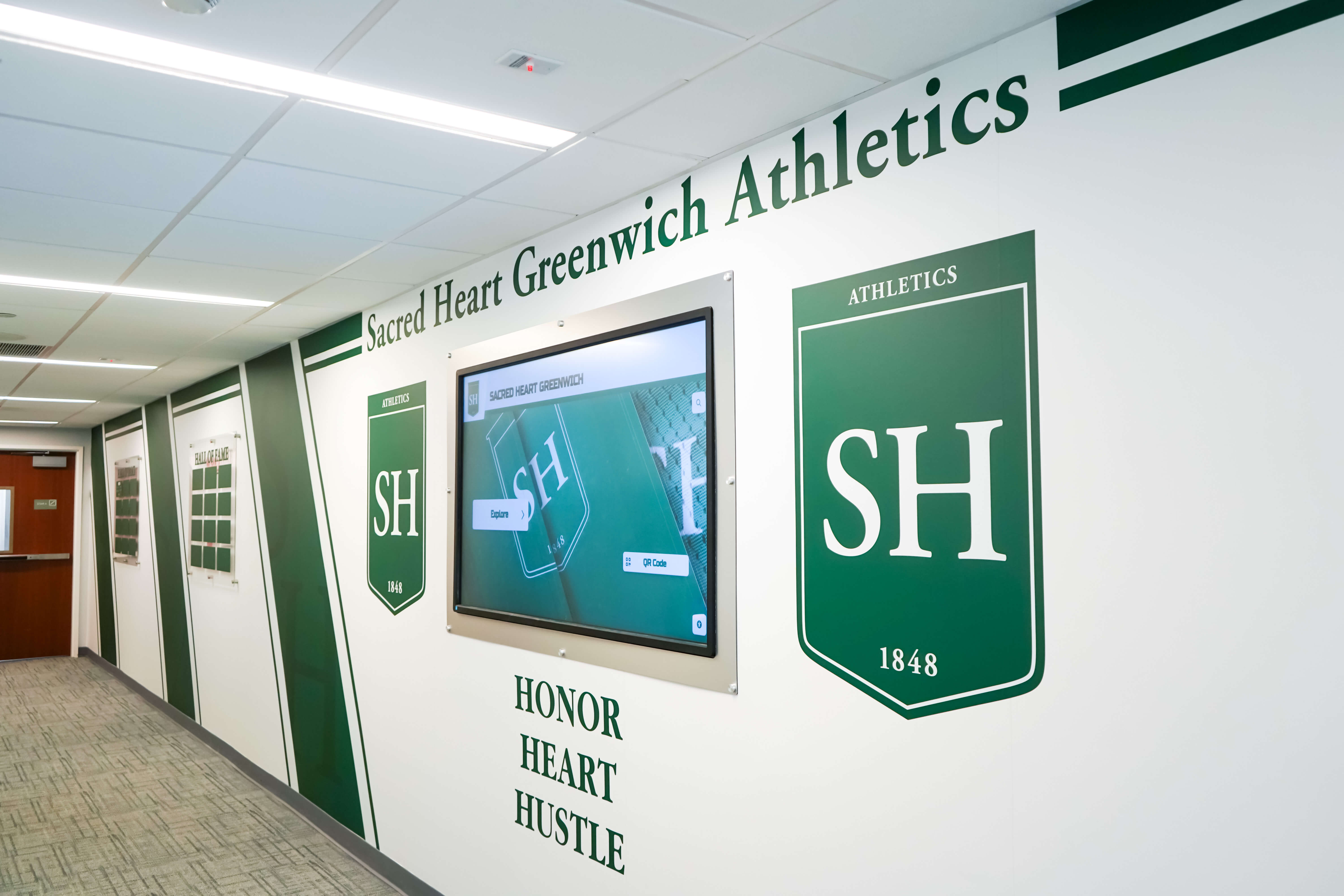Every school possesses a unique story shaped by decades of student achievements, transformative educators, championship moments, and institutional milestones that define its identity. Yet many schools struggle to present this rich history in accessible, engaging formats that inspire current students while honoring past excellence. Dusty yearbooks sit in storage, championship trophies crowd outdated cases, and countless achievements fade from memory simply because no systematic timeline documents when and how these significant moments shaped institutional development.
A well-crafted school history timeline transforms scattered historical fragments into cohesive narratives that build pride, strengthen community identity, and create continuity linking past achievement with future aspiration. Whether documenting a school’s founding in the 1800s or showcasing recent championship seasons, interactive timelines provide frameworks for organizing, preserving, and celebrating institutional legacy in formats that engage diverse audiences from prospective families to distinguished alumni.
Why School History Timelines Matter
Comprehensive history timelines serve as visual narratives connecting every generation who contributed to school development. They transform institutional memory from vague recollections into documented excellence while inspiring current students to add their own chapters to continuing stories. Solutions like Rocket Alumni Solutions help schools create interactive digital timelines that make decades of achievements searchable, accessible, and celebrated—turning historical archives into dynamic engagement tools that strengthen community bonds across generations.
Understanding the Power of Historical Timelines
Before diving into creation strategies, understanding why school history timelines deliver such significant value helps ensure implementation efforts align with institutional goals and serve diverse stakeholder needs.
The Psychology of Historical Connection
School history timelines create powerful psychological benefits for students, staff, alumni, and broader communities:
Identity Formation Through Continuity: Students develop stronger institutional identity when they visualize themselves as part of ongoing narratives extending decades before and beyond their enrollment. Seeing how each era contributed unique achievements creates sense of belonging that transcends individual experience while connecting current students to something larger than themselves.
Motivation Through Historical Context: Visible evidence of sustained excellence across generations inspires current students to pursue their own achievements. When athletes see championship seasons documented across decades, they understand program traditions worth upholding. When scholars discover long histories of academic distinction, they find motivation to maintain institutional standards.
Alumni Engagement Through Recognition: Graduates maintain stronger connections with schools that visibly honor their contributions within broader historical context. Alumni engagement through interactive recognition displays demonstrates measurable increases in participation when institutions show that past contributions remain valued decades later.
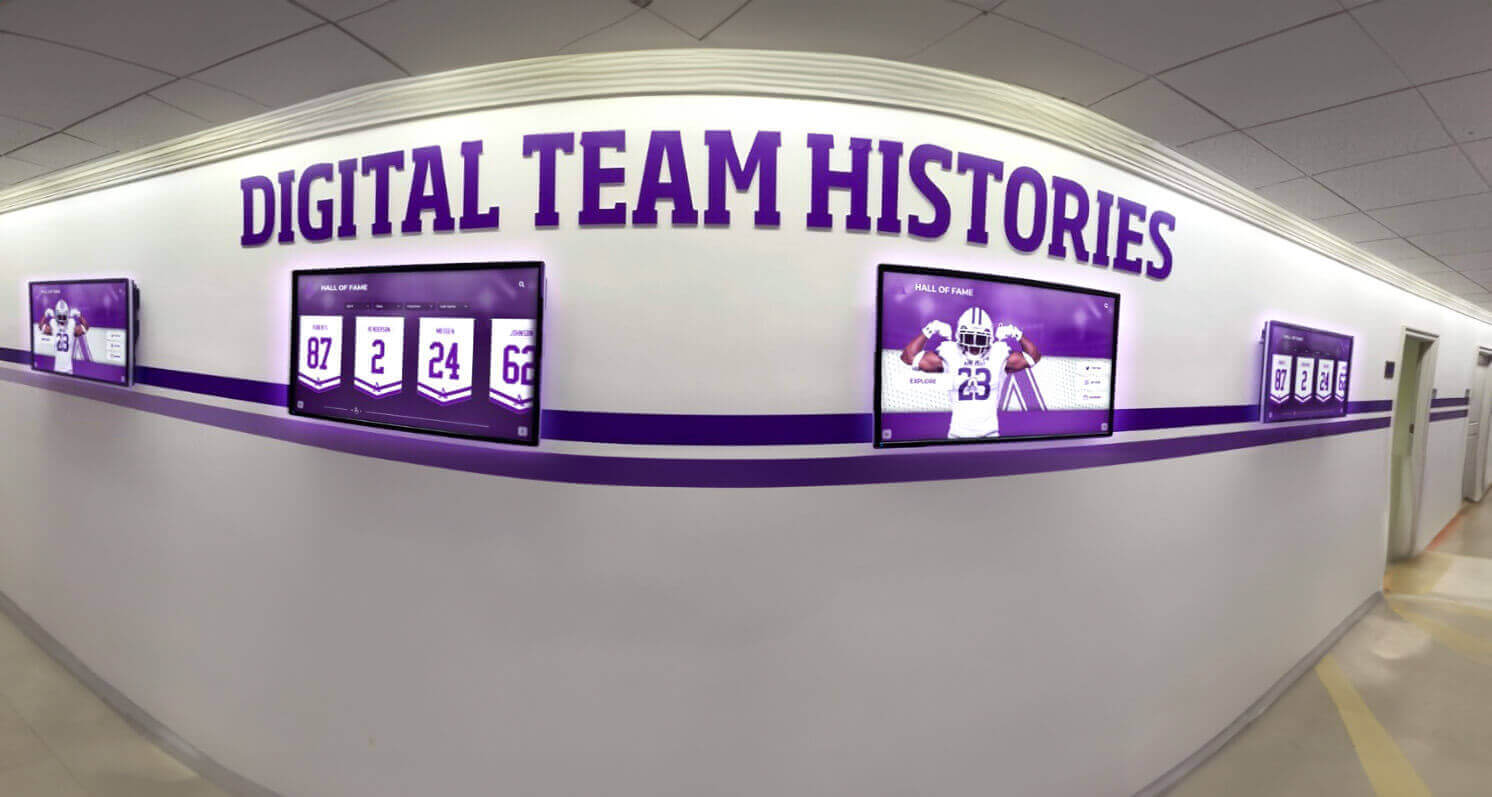
Institutional Credibility and Trust: Schools documenting comprehensive histories build credibility with prospective students, families, and communities. Detailed timelines demonstrate sustained commitment to educational excellence across generations—powerful messaging that strengthens recruitment while enhancing community reputation.
Preservation of Diverse Perspectives: Complete historical timelines honor diverse contributions across different eras, demographics, and achievement types. Inclusive documentation demonstrates that excellence comes in many forms and that every contribution to institutional development—academic, athletic, artistic, or civic—deserves recognition within larger narratives.
What Gets Lost Without Historical Documentation
Schools that fail to systematically document their histories in timeline formats experience significant losses that compound over time:
Forgotten Milestones: Without organized timelines, most institutional milestones fade within a generation. Founding dates become uncertain, significant facility expansions go unacknowledged, and transformative leadership transitions receive no recognition. This erasure diminishes institutional richness while disconnecting current communities from foundational moments that shaped present realities.
Broken Historical Narrative: Scattered historical fragments without connecting timelines fail to show institutional evolution and development patterns. New administrators lack historical context for current practices, long-serving staff become sole repositories of institutional memory, and transitions result in lost understanding of why certain traditions exist or how programs developed.
Missed Educational Opportunities: History timelines provide powerful educational tools connecting curriculum to lived institutional experience. Without accessible timelines, teachers miss opportunities to integrate local history into broader educational contexts, students lack understanding of how their school reflects larger historical trends, and connections between past and present remain abstract rather than concrete.
Weakened Community Identity: Communities with unclear historical narratives struggle to build strong collective identity. When current students cannot articulate school history beyond vague generalities, when alumni cannot find their achievements within documented institutional development, and when families lack understanding of institutional heritage, the bonds strengthening educational communities weaken across time.
Key Elements of Effective School History Timelines
Comprehensive school history timelines incorporate multiple elements that work together to create engaging, informative narratives serving diverse audiences.
1. Comprehensive Chronological Framework
The foundation of any effective timeline involves systematic chronological organization spanning complete institutional history:
Founding and Early Years: Document school establishment including founding date and circumstances, original location and facilities, founding leadership and vision, initial enrollment and demographics, and early curriculum and programs. These foundational elements provide essential context for understanding institutional development.
Major Milestones and Transitions: Chronicle significant developments across decades including facility expansions and constructions, name changes or reorganizations, accreditation achievements, significant leadership tenures, and program additions or eliminations. Major milestones show institutional growth and adaptation across time.
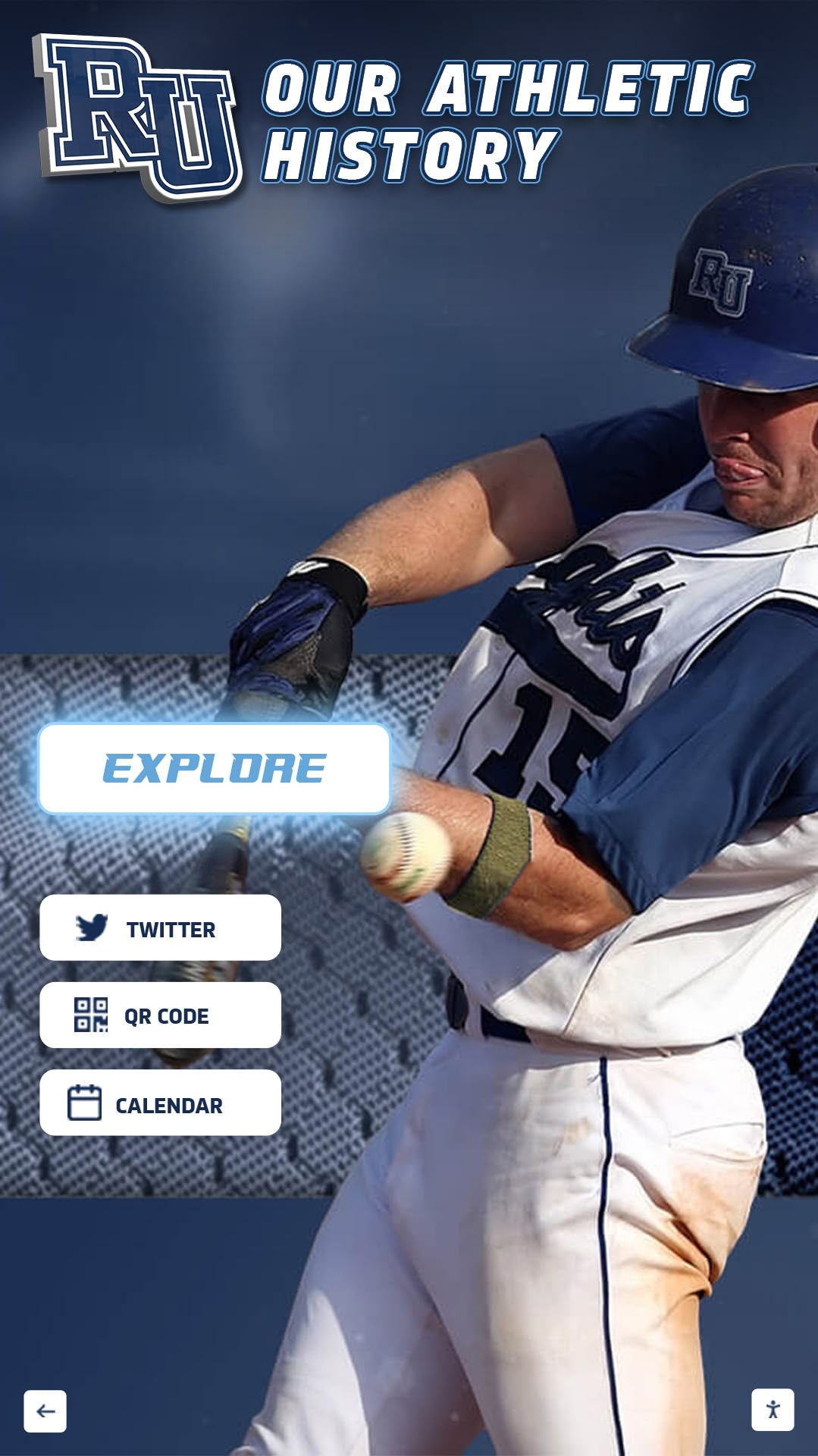
Decade-by-Decade Organization: Structure timelines in decade segments enabling easier navigation and clear developmental periods. Decade organization helps viewers understand distinct eras while maintaining overall chronological flow showing continuous development.
Integration of External Historical Context: Connect school history to broader historical events providing context for institutional decisions and developments. Note how World Wars, economic depressions, civil rights movements, or technological revolutions affected school communities and shaped institutional responses.
2. Athletic Achievement Documentation
Athletic excellence represents significant institutional achievement deserving prominent timeline placement:
Championship Seasons: Document all conference, regional, state, and national championships across all sports including year, sport, final records, key athletes and coaches, and championship game details. Digital record boards provide platforms for comprehensive athletic documentation integrated within broader historical timelines.
Record-Breaking Performances: Recognize individual and team records set across decades including performance details, athlete names, dates achieved, and contextual significance. Records demonstrate sustained athletic excellence while inspiring current athletes to pursue their own achievements.
Coaching Milestones: Honor coaches who built program traditions through tenure milestones, career victory totals, championships won, and program development contributions. Coaching recognition connects athletic success to leadership that shaped competitive excellence.
Facility Developments: Document athletic facility improvements from first gymnasiums to modern complexes, showing investment in programs across time. Facility timelines demonstrate institutional commitment to competitive athletics while providing visual documentation of physical campus evolution.
3. Academic Excellence Recognition
Balance athletic recognition with comprehensive academic achievement documentation:
Valedictorian and Scholar Recognition: Document valedictorians, salutatorians, and distinguished scholars across graduation years showing academic excellence sustained across generations. Academic achievement walls of fame demonstrate diverse forms of intellectual excellence deserving equal prominence with athletic recognition.
Academic Competition Success: Chronicle academic bowl championships, science fair victories, debate tournament wins, math competition placements, and other intellectual achievements. These successes demonstrate comprehensive educational excellence beyond traditional classroom metrics.
National Merit and Scholarship Recognition: Track National Merit Scholars, National Honor Society chapters, and significant scholarship recipients showing academic distinction recognized by external organizations. National recognition provides objective validation of academic program quality.
Curriculum Innovation: Document major curriculum additions, innovative teaching methods introduced, technology integration milestones, and special program developments. Curriculum evolution shows institutional adaptation to changing educational needs while maintaining academic excellence.
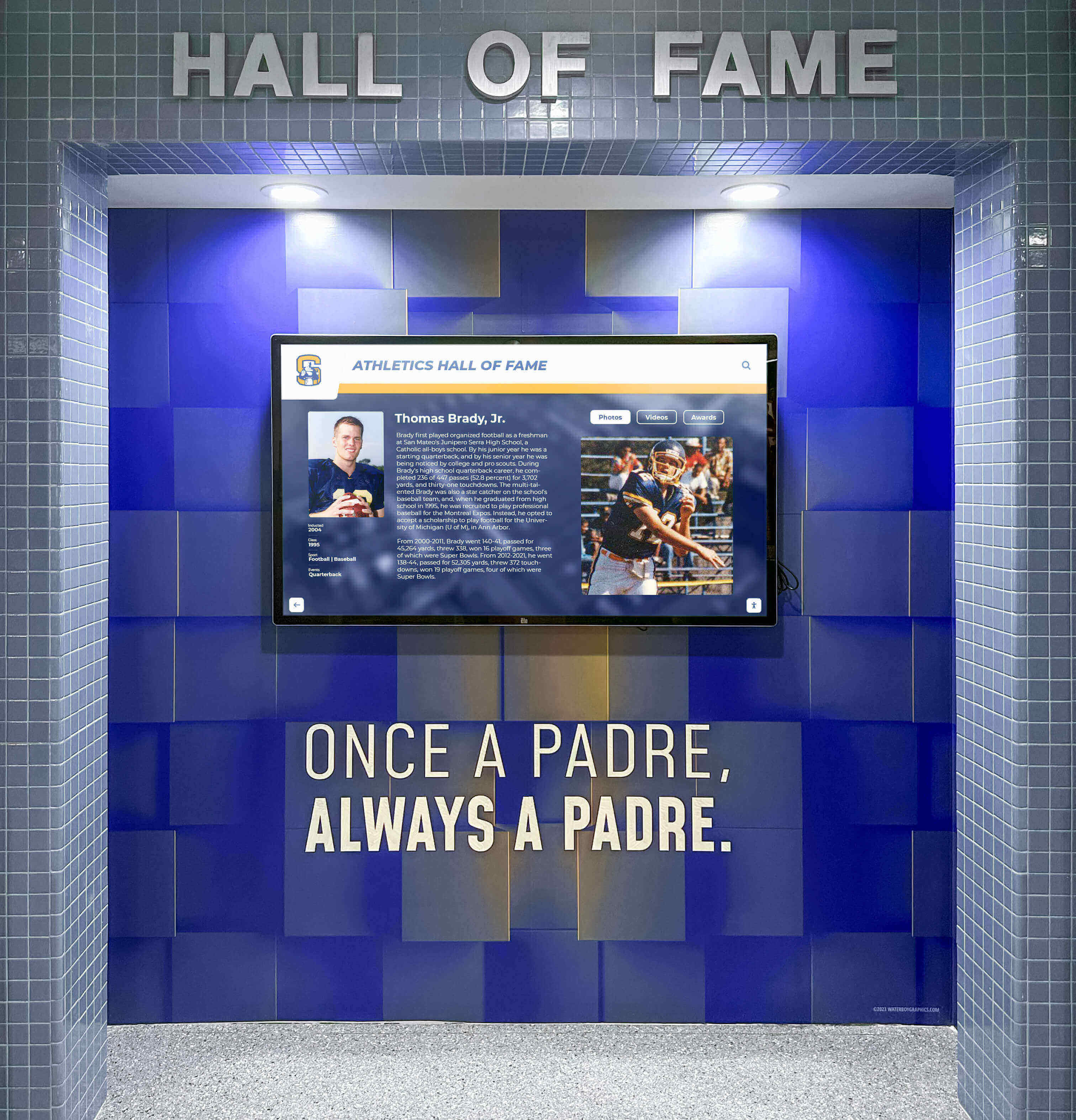
4. Cultural and Artistic Achievements
Schools develop rich cultural traditions deserving timeline recognition alongside academic and athletic accomplishments:
Performing Arts Milestones: Document notable theatrical productions, musical performances, choir competitions, band competitions, and dance recitals. Performing arts achievements demonstrate comprehensive student development beyond traditional academic and athletic metrics.
Visual Arts Recognition: Chronicle student artwork recognitions, gallery exhibitions, competition victories, and distinguished alumni pursuing artistic careers. Visual arts documentation celebrates creative excellence contributing to well-rounded institutional identity.
Publication Achievements: Recognize school newspaper awards, literary magazine accomplishments, yearbook distinctions, and student writing recognitions. Publication success demonstrates student voice and creative expression developed through school programs.
Cultural Events and Traditions: Document annual traditions, cultural celebrations, unique school customs, and signature events that define institutional character. Tradition documentation preserves cultural memory while helping current students understand practices connecting them to previous generations.
5. Leadership and Faculty Recognition
Institutional excellence depends on leadership and educators deserving prominent timeline recognition:
Administrative Leadership: Chronicle superintendents, principals, and other administrators showing leadership continuity and transition across decades. Teacher appreciation and recognition programs provide frameworks for honoring educators systematically.
Distinguished Educators: Recognize educators with significant tenures, teaching awards, innovative practices, or transformative impacts on programs and students. Educator recognition demonstrates that institutional excellence results from dedicated professionals shaping student lives.
Support Staff Contributions: Honor support staff who maintained school operations, built relationships with students, and contributed to positive school culture. Comprehensive recognition acknowledges that educational excellence requires entire communities working together.
Board and Community Leadership: Document school board members, major donors, community supporters, and volunteers who shaped institutional development through service and support. Community involvement recognition demonstrates partnerships extending beyond school walls.
6. Student Life and Traditions
Beyond formal achievements, student life elements create emotional connections strengthening school identity:
Annual Events and Traditions: Document homecoming celebrations, prom traditions, spirit weeks, rivalry games, and other recurring events that define school culture. School pride building traditions create continuity connecting students across generations.
Student Government and Leadership: Chronicle student council presidents, class officers, and student leadership initiatives showing youth civic engagement and school governance participation across decades.
Club and Organization Milestones: Recognize formation dates for clubs, major club achievements, service projects, and community impact initiatives. Club documentation shows diverse student interests and extracurricular opportunities beyond classroom learning.
Social and Cultural Evolution: Document how student life evolved across decades including dress codes, technology adoption, social norms, and cultural shifts. Evolution documentation provides sociological context showing how schools both reflected and shaped broader cultural changes.
Implementation Strategies for School History Timelines
Creating comprehensive school history timelines requires systematic approaches balancing thoroughness with sustainable resource allocation.
Phase 1: Research and Content Collection (Months 1-3)
Begin by gathering historical materials and documentation from diverse sources:
Archive Assessment: Inventory existing historical materials including yearbooks, trophies and awards, photographs and negatives, documents and correspondence, newspaper clippings, and memorabilia. Digitizing yearbooks and historical materials creates digital foundations for timeline development.
Stakeholder Interviews: Conduct oral history interviews with long-serving staff and faculty, retired administrators and teachers, distinguished alumni from various eras, and community members with institutional memory. Interviews capture perspectives and stories not documented in official records.

External Research: Research local newspaper archives, historical society records, government archives, alumni association files, and online genealogy resources. External sources often contain information not preserved in school records.
Timeline Framework Development: Establish organizational structure including decade divisions, category definitions (athletics, academics, culture, leadership), inclusion criteria for events and achievements, and consistency standards for entry formatting. Clear frameworks ensure coherent final products.
Phase 2: Content Organization and Verification (Months 3-6)
Systematically organize collected materials while verifying accuracy:
Data Entry and Organization: Create spreadsheet or database entries for each timeline event including date, category, description, key people involved, supporting documentation, and images or media. Systematic data entry enables sorting, filtering, and quality control.
Fact Verification: Cross-reference information across multiple sources, resolve conflicting dates or details, confirm names and spellings, validate achievement claims, and note uncertainty levels for incomplete information. Accuracy verification prevents misinformation perpetuation.
Gap Identification: Identify missing information or underrepresented time periods, prioritize gap-filling research, assign responsibilities for additional research, and set deadlines for completing priority gaps. Comprehensive timelines require addressing obvious omissions.
Content Review: Engage stakeholder committees to review timeline content for accuracy, completeness, balance across categories, and appropriate emphasis. Multiple reviewers catch errors while ensuring diverse perspectives inform final presentations.
Phase 3: Timeline Design and Development (Months 6-9)
Transform organized content into accessible, engaging timeline formats:
Format Selection: Choose between physical timeline displays, digital interactive timelines, printed publications, or hybrid approaches combining multiple formats. Interactive digital recognition displays enable unlimited content capacity with engaging user experiences impossible with physical timelines alone.
Visual Design Development: Create consistent visual language including color schemes, typography, iconography for different categories, image treatment standards, and layout templates. Professional design enhances credibility while improving information accessibility.
Content Writing: Transform data entries into engaging narrative descriptions, write contextual introductions for each decade, create category overviews, and develop interpretive content connecting events to broader themes. Compelling writing transforms data lists into stories.
Media Integration: Incorporate high-quality photographs, scan historical documents, include video clips when available, add audio recordings of interviews, and create interactive maps showing facility evolution. Rich media creates engaging multi-sensory experiences.
Phase 4: Implementation and Launch (Months 9-12)
Deploy completed timelines through appropriate channels and formats:
Physical Installation: For physical timelines, select prominent locations, design professional mounting, ensure proper lighting, provide wayfinding signage, and create accessible viewing. Location significantly impacts timeline visibility and engagement.
Digital Platform Development: Implement interactive timeline software, upload content systematically, configure navigation and search features, test functionality thoroughly, and optimize for mobile access. Technical excellence ensures positive user experiences.
Website Integration: Create dedicated history sections on school websites, embed interactive timelines, provide downloadable timeline resources, enable social sharing, and optimize for search engines. Online halls of fame extend timeline accessibility to global audiences.
Launch Event Planning: Host formal timeline unveiling, invite key stakeholders and community, provide guided tours and demonstrations, generate media coverage, and capture event documentation. Launch events build awareness while celebrating historical preservation achievements.
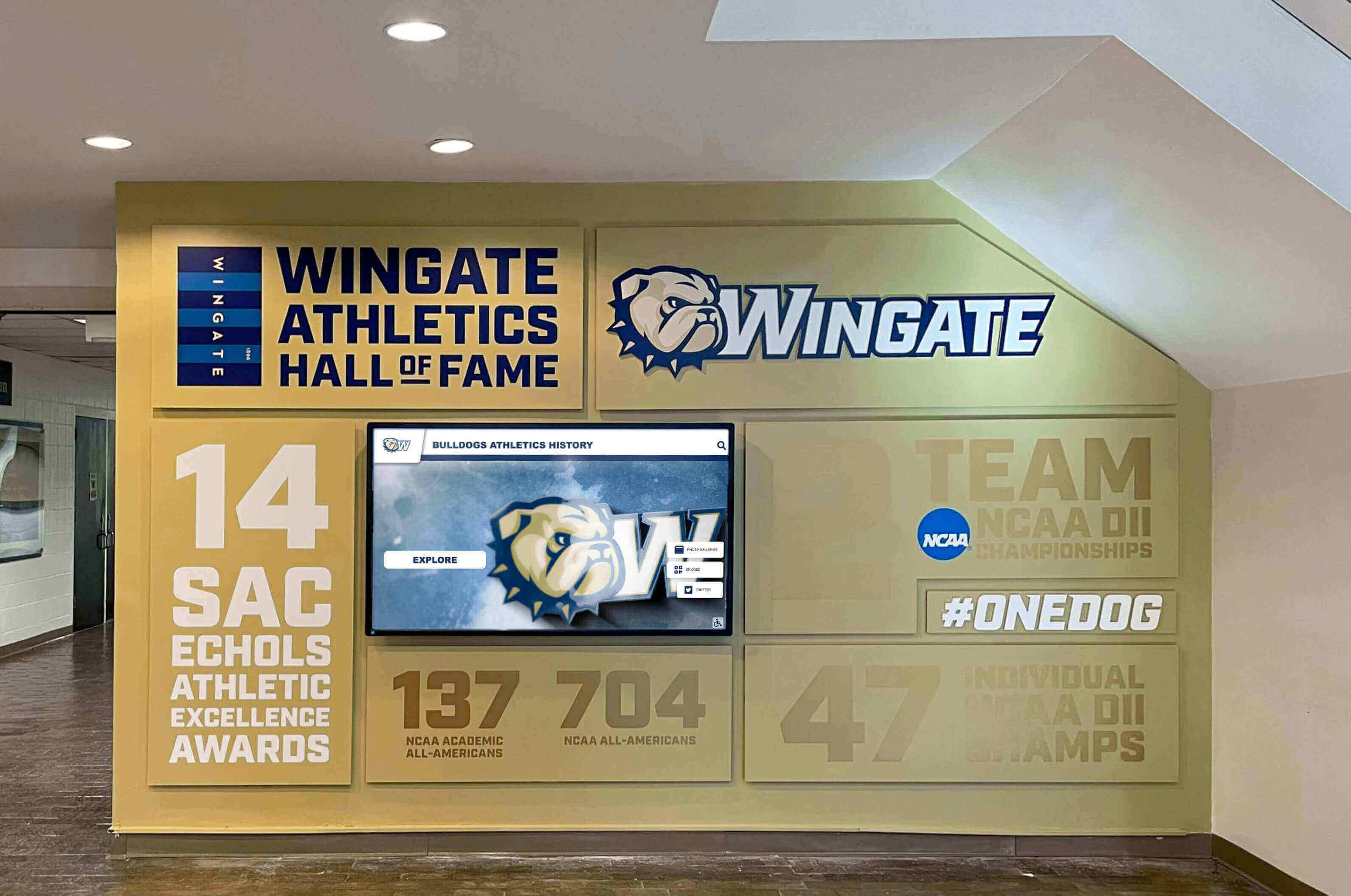
Modern Technology for Interactive Historical Timelines
Digital technology transforms how schools present historical timelines, offering capabilities impossible with traditional physical displays.
Interactive Touchscreen Timeline Displays
Modern touchscreen technology enables engaging historical exploration:
Intuitive Navigation: Users can scroll through decades with touch gestures, zoom into specific years or events, filter by category or achievement type, search for specific people or events, and bookmark favorite entries. Intuitive interfaces encourage exploration beyond passive reading.
Unlimited Content Capacity: Digital timelines accommodate thousands of entries, comprehensive achievement documentation, extensive photo galleries, video content libraries, and detailed biographical information. Digital trophy displays demonstrate how digital platforms solve space limitations inherent in physical recognition systems.
Rich Multimedia Integration: Digital timelines support high-resolution photographs, historical video footage, audio oral histories, scanned documents and newspapers, 3D object views, and interactive maps. Multimedia richness creates immersive experiences connecting viewers emotionally with historical content.
Regular Content Updates: Cloud-based content management enables continuous timeline updates, immediate corrections of errors, addition of newly discovered information, integration of current achievements, and seasonal feature rotations. Dynamic timelines grow and improve continuously rather than becoming static upon completion.
Web-Based Historical Archives
Online timeline platforms extend accessibility beyond physical campus visits:
24/7 Global Access: Alumni anywhere can explore school history, prospective families research institutional heritage, current students complete homework assignments, researchers access historical information, and community members discover local history. Unrestricted access maximizes timeline value and engagement.
Social Sharing Capabilities: Users can share specific timeline entries on social media, send historical information to friends and family, embed timeline content in other websites, and create custom collections of favorite entries. Social sharing extends institutional visibility organically through user networks.
Mobile Optimization: Responsive designs ensure optimal experiences on smartphones and tablets, touch-friendly interfaces work across devices, offline access through progressive web apps, and location-based features trigger relevant historical content. Mobile access meets users where they naturally engage with digital content.
Analytics and Engagement Tracking: Usage data reveals most popular time periods, identifies highly engaged content categories, shows geographic user distribution, measures session duration patterns, and informs continuous improvement efforts. Analytics enable data-driven timeline enhancement over time.
Augmented Reality Historical Experiences
Emerging technology creates innovative approaches to historical engagement:
Campus Historical Tours: Mobile AR apps overlay historical photos on current campus views, reveal former buildings no longer standing, show facility evolution over time, provide contextual historical information, and create scavenger hunt experiences. AR makes history tangible through direct visual comparison with present reality.
Virtual Time Travel: Immersive VR experiences recreate historical spaces, allow users to “attend” past events, provide 360-degree views of historical facilities, and enable virtual meetings with historical figures. VR technology makes history experiential rather than purely informational.
Interactive Historical Markers: Physical markers throughout campus trigger AR content when scanned, provide location-specific historical information, overlay historical images on current spaces, and create connected storytelling across campus locations. AR bridges physical and digital experiences seamlessly.
Maintaining and Growing Historical Timelines
Completed timelines require ongoing maintenance and expansion ensuring they remain accurate, relevant, and engaging over time.
Establishing Update Processes
Systematic procedures ensure timelines grow continuously:
Annual Content Addition: Schedule regular timeline updates incorporating recent achievements, adding newly discovered historical information, filling identified gaps, updating living biography information, and rotating featured content. Annual cycles create sustainable update rhythms.
Designated Responsibilities: Assign specific staff or committee members responsibility for timeline maintenance, train multiple people on content management systems, document update procedures, establish content review workflows, and plan succession during personnel transitions. Clear ownership prevents abandonment.

Community Contribution Processes: Enable alumni to submit historical information, allow staff to recommend additions, provide forms for achievement nominations, implement review procedures for submitted content, and acknowledge community contributors. Community involvement distributes work while building engagement.
Quality Control Standards: Maintain consistent writing styles, verify accuracy of new submissions, ensure image quality standards, preserve visual design consistency, and review content for appropriateness. Standards prevent quality degradation as timelines grow.
Leveraging Timelines for Ongoing Engagement
Completed timelines become platforms for continuous community engagement:
Social Media Historical Content: Share “This Day in History” posts highlighting timeline entries, create throwback Thursday features, develop historical comparison posts, celebrate anniversary milestones, and encourage community memory sharing. Social media extends timeline reach beyond those viewing physical or website displays.
Educational Programming: Integrate timelines into history curriculum, assign student research projects, host historical presentation events, invite alumni for storytelling sessions, and create student-produced video documentaries. Educational use demonstrates timeline value while enhancing student learning.
Reunion Integration: Feature relevant timeline content during class reunions, create customized timeline displays for specific graduation years, enable reunion attendees to add memories, and photograph reunion updates for timeline addition. High school reunion planning benefits significantly from accessible historical timelines supporting event programming.
Development and Fundraising: Use historical timelines in donor cultivation, show institutional legacy warranting support, recognize donor contributions within timelines, connect giving to historical values, and demonstrate stewardship of institutional heritage. Historical documentation strengthens development narratives.
Measuring Timeline Impact and Success
Effective historical timelines deliver measurable benefits across multiple dimensions:
Engagement Metrics
Track concrete indicators of timeline impact and usage:
- Physical display foot traffic and interaction duration
- Website timeline page views and session lengths
- Search query volumes and popular keywords
- Social media timeline content engagement rates
- Mobile app downloads and active user counts
- User-submitted content and community contributions
- Educational programming participation rates
Qualitative Feedback
Gather stakeholder perspectives revealing experiential value:
- Alumni testimonials about historical discovery and pride
- Student reflections on identity and belonging
- Teacher reports on curriculum integration value
- Prospective family feedback on recruitment impressions
- Community recognition of institutional heritage celebration
- Media coverage highlighting timeline projects
- Spontaneous sharing and word-of-mouth promotion
Institutional Benefits
Assess broader impacts supporting strategic goals:
- Enhanced recruitment demonstrating sustained excellence
- Increased alumni giving and engagement
- Stronger school pride and community identity
- Improved community relationships and visibility
- Protected institutional memory and continuity
- Differentiated brand identity and reputation
- Research value for historical and educational purposes
Special Timeline Applications
School history timelines serve diverse specialized purposes beyond general historical documentation.
Anniversary and Milestone Celebrations
Significant institutional anniversaries provide natural timeline showcase opportunities:
Centennial Celebrations: Schools reaching 100-year milestones often create comprehensive timelines as centerpiece recognition, produce historical publications documenting complete institutional history, host community events celebrating heritage, and create permanent installations ensuring ongoing visibility. Best ways to honor school history provides frameworks for milestone celebration planning.
Decade Milestones: Mark 50th, 75th, or 125th anniversaries with timeline updates, special recognition of historical eras, reunion coordination for milestone classes, and renewed community engagement around institutional heritage.
Facility Dedications: Document building history as part of renovation or new construction projects, show facility evolution through timeline presentations, recognize donors within historical context, and create time capsules for future historical discovery.
Athletic Program Histories
Sport-specific timelines document competitive excellence:
Championship Traditions: Chronicle all championships in timeline format, show program evolution across decades, recognize all-time great athletes and coaches, document rivalry history and memorable moments, and inspire current athletes through visible excellence legacy.
Record Board Integration: Combine athletic records with timeline context, show when records were set and by whom, document record progression over time, and connect individual achievements to team and program success. Converting traditional record boards to digital displays enables integration of multiple data types including timelines and individual records.
Coaching Legacy Documentation: Honor coaches who built programs through timeline recognition, show coaching trees and development pathways, document coaching philosophy evolution, and connect past coaching to current program values.
Academic Department Histories
Document curricular and programmatic evolution:
Department Founding and Growth: Show when departments were established, document curriculum expansion over decades, recognize distinguished faculty contributions, and highlight graduate achievement in discipline-specific fields.
Innovation Documentation: Chronicle adoption of new teaching methods, document technology integration milestones, show response to educational reform movements, and demonstrate continuous improvement commitment across time.
Student Success Stories: Highlight distinguished alumni from specific departments, document research and creative achievements, show student competition success, and demonstrate program outcomes across generations.
Conclusion: Preserving Yesterday to Inspire Tomorrow
School history timelines represent far more than chronological lists of dates and events—they embody collective achievement, shared values, and continuing narratives connecting everyone who contributes to institutional development. When schools systematically document their histories in accessible timeline formats, they honor every student who excelled, every educator who shaped minds, every team that achieved greatness, and every graduate who carries institutional identity into broader communities.
Comprehensive historical timelines combine systematic research with engaging presentation, thorough documentation with selective storytelling, traditional preservation with modern technology, and professional curation with community participation. Digital recognition platforms like Rocket Alumni Solutions provide technological foundations for interactive timelines that transform static historical documentation into dynamic engagement tools strengthening institutional pride and connection across generations.
Whether documenting founding histories from the 1800s, preserving championship traditions from the 1900s, or recognizing contemporary achievements from recent years, the strategies outlined in this guide provide frameworks for creating timelines that serve diverse audiences across generations. Schools can implement phased approaches matching available resources while building toward comprehensive historical documentation that honors past excellence while inspiring future achievement.
Every school has a story worth preserving. Every milestone deserves recognition. Every student, educator, and graduate contributes to institutional development in ways that merit lasting acknowledgment within broader historical narratives. When schools commit to creating comprehensive historical timelines, they demonstrate that every contribution matters, every moment of excellence remains valued, and every participant in school community belongs to something larger than themselves—continuing traditions of excellence spanning generations and extending into unlimited futures.
Start documenting your school history timeline today. Your current students will discover their place within larger institutional narratives. Your alumni will find renewed connection through visible recognition of their contributions. Your community will take pride in documented excellence across generations. And future community members will benefit from institutional memory preserved and celebrated for their discovery and inspiration.
